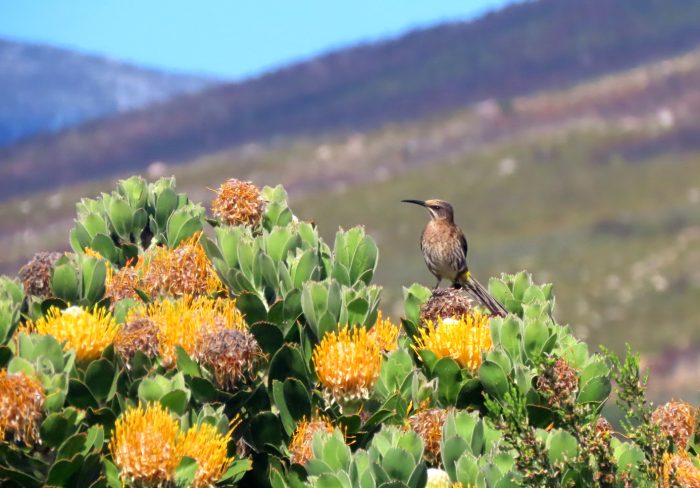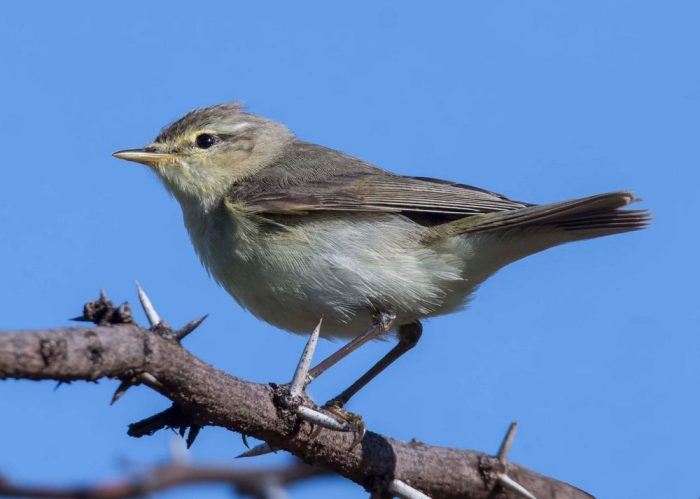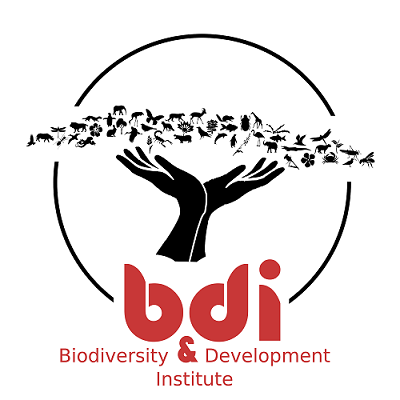What do we learn from bird ringing? The first, quick and obvious answer is that ringing helps us understand movement patterns of birds. The more subtle answer is that it provides estimates of survival rates; these are estimated by statistical methods and are important because they help us understand the balance between births and deaths. The third answer lies in the data we collect off the bird while we are handling it. Fourthly, when bird ringing is conducted for many years at a single site, we discover trends; for example, we learn how the timing of migration through Europe is changing in response to climate change. The value of bird ringing is awesome.
What do we learn about bird movements from ringing?
Until quite recently, bird ringing was the only way to discover the secrets of migration. Where does a Barn Swallow that breeds in Denmark go to escape the northern winter? This is an important question for Danish conservation biologists because, if they want to maintain the breeding population in their country, they need to know what part of the non-breeding range they should motivate for conservation resources to be invested in order to protect “their” swallows. This question applies in the opposite direction too. If we are going to maintain populations of Barn Swallows in KwaZulu-Natal, we need to know where they breed, so we can motivate for their protection. Even though these questions of linkages between breeding, staging and non-breeding areas are also answered by satellite tracking and geolocators, bird ringing remains an important source of movement information. Compared to other methods, ringing is inexpensive and relatively non-intrusive.
There are so many examples of movements of Barn Swallows between Europe and Africa that when you use lines to join the places where the bird was ringed and where the ring was “recovered” (ie the bird was retrapped or found dead), the map is a total mess. So we use the Red Knot Calidris canutus to illustrate the patterns that emerge. Most ringing of Knots in South Africa was done at Langebaan Lagoon, West Coast National Park, Western Cape. The lines join the places of ringing and recovery, and do not imply that the bird flew along this route!

What is striking about this map is that there are no recoveries of Red Knots in the Middle East or around the Black Sea. The map suggests that they are migrating along the west coasts of Africa and Europe and then heading east via Scandinavia. The breeding area that they are heading for is in Siberia, which has extremely few people so it is not unexpected that there are no “recoveries” during the breeding season. The results emerging from the ringing of other waders (e.g. Curlew Sandpipers Calidris ferruginea and Little Stint Calidris minuta) shows that they migrate to Siberia through the Middle East.
So we know a huge amount about bird migration between Eurasia and Africa. By comparison, we know rather little about the movement patterns of species such as White-throated Swallow Hirundo albigullaris. This swallow arrives in southern Africa in August and September, breeds mostly from October to December, and then heads off north in March and April. We know they go to “central Africa”, but that is really vague. There are no recoveries of ringed birds, even though large numbers have been ringed in southern Africa.
Cape Sugarbirds Promerops cafer are endemic to the Fynbos Biome of the Western Cape, South Africa. This is a habitat which is dependent on fire; if Fynbos doesn’t burn, it becomes moribund after about 15 years. Fire resets the Fynbos clock, with the first years after the fire being the most productive. Almost wherever and whenever a patch of proteas is in flower in the Fynbos, there are sugarbirds present. When the flowering period is over, the sugarbirds move off. But we have no idea where they go. And we have no idea of the patterns of movement that get them from one flowering patch to the next over a year. One possibility is that there is a collection of say six or more patches where proteas are flowering in succession through the year, with the sugarbirds moving from patch to patch in an annual rotation. But what happens when there is the inevitable fire, and the grove of yellow pincushions that they have come to rely on in October and November gets burnt? How do they adapt to this disruption? Knowing how they do this is an important conservation concern for sugarbirds. It is remarkable that we know the details of bird movements between the continents, but remarkably little about movements at small scales!

How does bird ringing help us estimate survival rates?
Professor George Seber at the University of Auckland in New Zealand did the complicated mathematical statistics to show how numbers of retraps of ringed birds over a period of years could be used to make estimates of the annual survival rates. Subsequently, an academic industry has been developed, making improvements and refinements to the original method. For example, an early extension enabled us to obtain separate survival estimates for young birds, which are almost invariably considerably less than adults. Another extension modified the statistics so that survival estimates were available for each calendar year, so it became possible to discover the impact of a drought (in Africa) or a particularly cold winter (in Europe) on survival. These statistical methods produce better answers if the number of birds ringed is large (and consistent between years), and if the ringing operation is kept going for many years.
The importance of having survival rates is that it enables conservation biologists to investigate whether the production of fledglings is sufficient to balance mortality, and to work out whether the population of a species is increasing or decreasing. For example, Phil Hockey estimated that every breeding pair of African Oystercatchers needs to produce, on average, 0.35 young per year in order to maintain a stable population. In practice, this means that a pair of oystercatchers needs to raise one chick every three years! The African Oystercatcher is one of a tiny number of species for which this really valuable statistic has been worked out.
The annual survival rate for adult African Oystercatchers is 96%. We are still, in 2023, seeing oystercatchers on Robben Island which we know were ringed in 2002, 21 years ago. Is this a surprise? The proportion of oystercatchers which survive 21 years is estimated by multiplying the survival rate (expressed as a proportion, i.e. 0.96) by itself 21 times: 0.96 x 0.96 x … x 0.96 = 0.42. So an annual survival of 96% is equivalent to a 21 year survival of 42%. This means that 42% of the African Oystercatchers which were breeding 21 years ago are still breeding. Because the survival rate is so large, they have (on average) lots of breeding seasons, and don’t need to be very successful at breeding to keep the population stable.

In contrast, the adult survival rate for African Penguins is about 80%. This means that if you have 1000 penguins in January 2002, you can expect 800 to still be alive in January 2003. A year later, January 2003, there’ll be 640. Only nine of these 1000 birds would still be expected to be alive in January 2023. A survival rate of 80% is alarmingly small for a bird as large as an African Penguin, and it is this low survival rate which is at the heart of the conservation problems of this species. Breeding productivity is not matching the mortality rate.
Why is important to know the age at which birds of a species start breeding?
Age at first breeding is one of the really critical bits of information for the conservation of a species. Suppose the survival rate of breeding adults of a bird species is 90%. If you have 1000 adult birds of a species at the start of the year, 900 survive, and 100 die. How many fledglings need to be produced each year so that when they reach breeding age, there are 100 recruits into the adult population? This is what is needed to maintain a stable population. Suppose 400 fledglings are produced in a year. Suppose survival to age one year is 25%. There will be 100 left after the year. If these birds are recruited into the adult breeding population, we will have replaced the birds that have died. But if they breed for the first time after two years, or three years, then there will be fewer than 100 birds to recruit into the breeding population, and overall numbers will steadily decrease. So age at first breeding is an important piece of information. The easiest way to find this out is by ringing young birds and doing the hard follow-up work to check when they enter the breeding population. Even though it is the “easiest” way, it requires dedicated fieldwork by ringers to discover this nugget of information.
What information can we obtain while we have the bird “in the hand”?
This information is on p 640 of Roberts 7. It provides the measurements and mass of Leach’s Storm Petrel Oceanodroma leucorhoa:

Where does this information come from? There was a period in the late 1990s when Leach’s Storm Petrels were discovered breeding for a few years on Dassen Island and Dyer Island. We made a special effort to ring these birds, and the results were published in a paper in a journal callde the Transactions of the Royal Society of South Africa; you can download it. This table, which summarizes the measurements made during ringing, comes out of the paper:

The information in this table was carried over into Roberts7 (with the appropriate acknowledgements!). Ultimately, most of the measurement data in ornithological handbooks globally is summarized from data collected by bird ringers.
One of the standard measurements collected by ringers is mass. We assembled all the masses collected by members of the Western Cape Wader Study Group from Red Knots Calidris canutus while they were being ringed, and plotted them:

The Red Knots that visit South Africa breed on the Siberian tundra, about 13,000 km from Langebaan Lagoon, in the West Coast National Park, where most of these birds were caught. They are long distance migrants. The line in this plot is a statistical “smoother”, designed to lead the eye through the “message” that the plot conveys. From the time they arrive until around the end of February, the average mass hovers around 130 g. Then, quite suddenly, they start increasing in mass. This is mostly fat, fuel for the arduous journey to the Siberian tundra that lies ahead of them.

Moult
Feathers are light and strong, but they are steadily degraded by exposure to sunlight and by flight. For most bird species they are replaced on an annual basis, a process called moult. Part of the training to become a bird ringer is to learn how to record moult, and how to score the progress of moult of the primaries, the feathers on the outsides of the wings, the ones that are most important for flight. Most species have either 9 or 10 conspicuous primaries. Those that are old are scored a 0, and those that are new are scored 5. Scores of 1 to 4 are given to growing primaries, so the moult score of a bird near the start of moult might look like 55410 00000; the first two primaries are new, the next two are growing, and the rest are old. For a species like the Red Knot, the outer primaries are much larger than the inner primaries, so we did the arithmetic to convert the moult score into “percent feather mass grown”, and we came up with a plot that looks like this:

Each dot represents the progress with moult for a bird ringed on a date. The Underhill-Zucchini moult model then estimates the average starting date for the primary moult of Red Knots in South Africa as 25 October, the duration as 95 days, with an average end date of 28 January. The dotted lines ought to enclose about 95% of the moult scores. Comparing this plot with the one above for mass, it is clear that the average Red Knot migrating to South Africa has about a month of “holiday” between the end of primary moult and start to fuel for migration. This information all contributes to our understanding of the conservation requirements of this species … and all of it comes from bird ringing.
Lots more paragraphs could follow here! Sometimes there is a need for samples to be collected for genetic studies. Ringers are excellently placed to help! Two citizen scientist bird ringers, Felicity Ellmore and Ursula Bryson, were recruited by an international team of researchers to collect tiny feather samples from “African Reed Warblers” for South Africa and Namibia respectively. The upshot of this project was the decision to merge the “African Reed Warbler” and the “European Reed Warbler” into a single species, the Common Reed Warbler Acrocephalus scirpaceus. Here is the link to the paper.
What is the value of having a long-term ringing station?
Bird ringers in Europe (and bird banders in North America) are familiar with the concept of a “bird observatory”. The concept even has an article in Wikipedia; no bird observatories in Africa are listed. Most bird observatories are also ringing stations.
In September 1960, an undergraduate student at the University of Warsaw, named Przemysław Busse, initiated standardized bird ringing to study southward migration along the coast of the Baltic Sea, Poland. A year later it was called Operation Baltic. The project grew and expanded to study both spring and autumn migration at three ringing stations along the Polish coast. The young student graduated through the academic hierarchy to become Professor Busse, Head of the Bird Migration Research Station (BMRS), in the Faculty of Biology, University of Gdańsk, Poland. When he retired, Dr Magda Remisiewicz, who had been a PhD student of Professor Busse’s and then a post-doc at the University of Cape Town, took over as Head of the BMRS. One of her first initiatives was to turn the early paper records into files on computers! It is a rich database.

It is well known that northwards migration through Europe to the breeding grounds of the small warblers, for example, is getting earlier. All this is true at the ringing stations in Poland as well. But Magda spotted that there is also a huge amount of annual variation in the timing of migration. Magda wanted to understand this. We developed an index of earlyness/lateness in the migration each year for the Willow Warbler Phylloscopus trochilus, and then tried to relate this to the large scale climate indices which the warblers had experienced during their travels in the previous 12 months. We used things like the South Oscillation Index, which drives El Nino/La Nina, and which plays a key role in how much rain falls in southern Africa. We quickly hit the jackpot, and found a statistical model that “explained” two-thirds of the annual variation in the timing of the passage of Willow Warblers through Poland. There is more detail in this blog. The paper itself is open access, and so are a second and third of the same theme. These papers make a valuable contribution to understanding the impact of climate change on bird migration.
What made these papers possible was systematic and consistent bird ringing over a period of decades at a bird ringing station. This is what we need to emulate!
The value of bird ringing
Ultimately, the fundamental question runs like this: “Does bird ringing make an important contribution to bird research and conservation? Or is it simply a kind of hobby for a select group of bird watchers?” The problem is with the word “OR”. The answer to both questions is YES. Bird ringing makes a vital contribution to the study of the population dynamics and movements of birds, and how these things are changing as a result of development and climate change. A lot of the data for this research is collected by a carefully-trained group of citizen scientists, whose passion is working with birds for the ultimate objective of conservation. They consider working with birds to be a privilege and a responsibility.

Bird ringing courses
The Biodiversity and Development Institute runs bird ringing courses in South Africa. You can read about them here and find out when the next ones are taking place.
If you find a bird with a ring …
… please report it to the South African Bird Ringing Unit (SAFRING). There is a website with a form to fill in all the information needed. Within a few weeks, you will be informed about the date and place where the bird was ringed.
More reading!
Here are two papers in scientific journals with the same theme as here, the value of bird ringing:
Anderson GQA, Green RE 2009. The value of ringing for bird conservation. Ringing & Migration 24: 205–212.
Baillie SR 2001. The contribution of ringing to the conservation and management of bird populations: A review. Ardea 89: 167–184. (You get asked for your email address; then the download of the pdf is free.)
Here is an account of how bird ringing developed in South Africa:
Oschadleus HD 2018. Bird ringing (banding) in South Africa – a short history. Biodiversity and Development Institute. Available online at https://thebdi.org/bird-ringing-in-south-africa-a-short-history/
Recommended citation format
Underhill LG 2023. The value of bird ringing to research and conservation. Biodiversity and Development Institute. Available online at http://thebdi.org/2023/03/31/the-value-of-bird-ringing-to-research-and-conservation/

